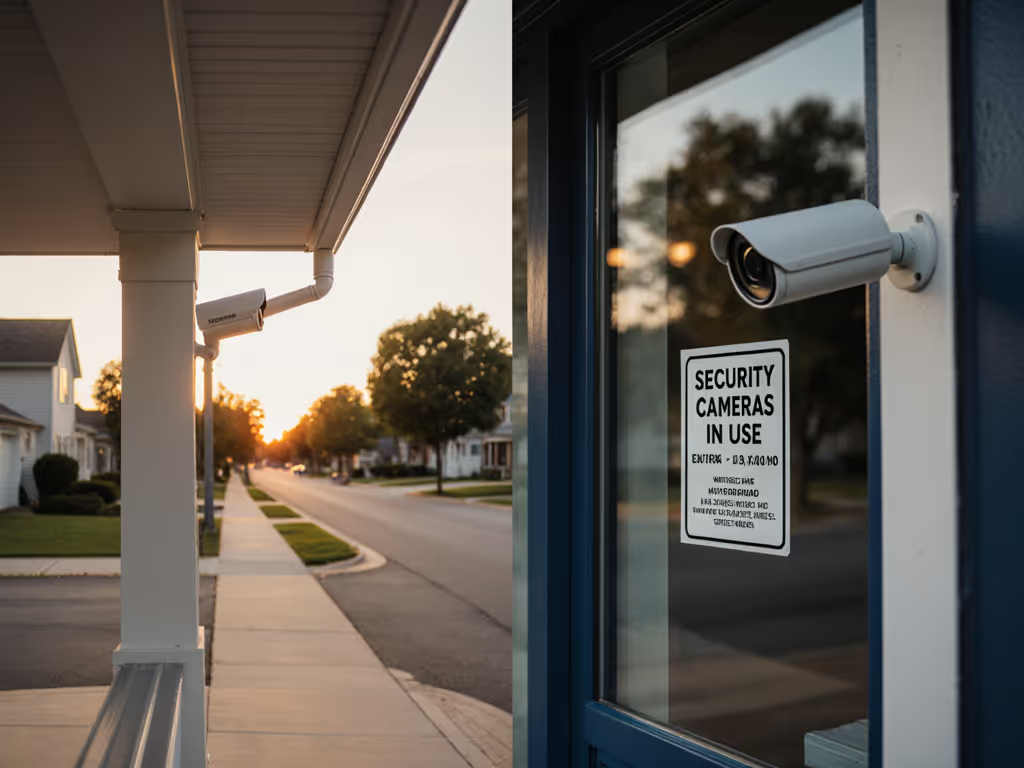State Security Camera Laws 2025: Legal Placement Guide

Understanding security camera laws prevents costly legal violations while maximizing protection. This guide breaks down federal and state recording regulations, focusing on practical legal camera placement strategies that respect privacy without compromising safety. We analyze key statutes and precedent cases to deliver actionable compliance tactics for homeowners and businesses.
1. Federal Legal Framework
Federal law permits surveillance in public areas but prohibits recording where individuals expect privacy, like bathrooms, bedrooms, or dressing rooms. The Electronic Communications Privacy Act (ECPA) governs audio recording:
| Consent Type | States | Requirements |
|---|---|---|
| One-party | TX, NY | One participant must consent |
| All-party | CA, PA | All parties must consent |
| Mixed | OR | Varies by communication type |
Violations risk felony charges under wiretapping laws. Always verify consent rules before enabling audio features.
2. State-Specific Camera Placement Rules
Only 15 states have explicit security camera laws, creating a patchwork of regulations:
- Georgia, Florida, Alabama, Minnesota: Visible cameras allowed in public spaces; hidden cameras permitted only in non-private areas.
- Tennessee, Michigan, Utah: Hidden cameras banned in private spaces without consent.
- Hawaii, New Hampshire, Maine, Kansas, South Dakota, Delaware: Consent required for all hidden surveillance.
- California: Prohibits recording "confidential communications" (e.g., private conversations) without dual consent.
Always prioritize visibility: post clear signage like "Recording in Progress" to meet disclosure requirements.
3. California Compliance Case Study
California exemplifies strict home surveillance law with three core rules:
Legal Placement Zones:
- Driveways, entrances, garages
- Public-facing business areas
Prohibited Areas:
- Bathrooms, bedrooms, changing rooms
- Any space with "reasonable privacy expectation"
Audio Recording Protocol:
- Two-party consent mandatory
- Verbal/written permission required before activation
Violating Penal Code § 647(j) incurs misdemeanor charges and civil penalties.
4. Practical Placement Strategies
For Homeowners:
- Point cameras inward toward property boundaries, and avoid neighbor's windows.
- Elevate doorbell cameras to capture faces without recording sidewalk conversations.
For Businesses:
- Disclose employee monitoring in public work areas (e.g., cash registers).
- Mask private zones (locker rooms) via software privacy blocks.
Cut noise, keep outcomes: Prioritize visible, high-traffic zones like entry points over broad coverage.
Final Verdict
Compliance reduces risk exponentially:
- Audit placement against state privacy laws, especially in California and all-party consent states.
- Disable audio unless dual consent is obtainable.
- Document consent agreements for business surveillance.
Always cross-reference county/city codes, as localized restrictions often exceed state mandates. Proactive adherence avoids evidence dismissal in court and neighbor disputes, ensuring your security investment delivers tangible protection.
